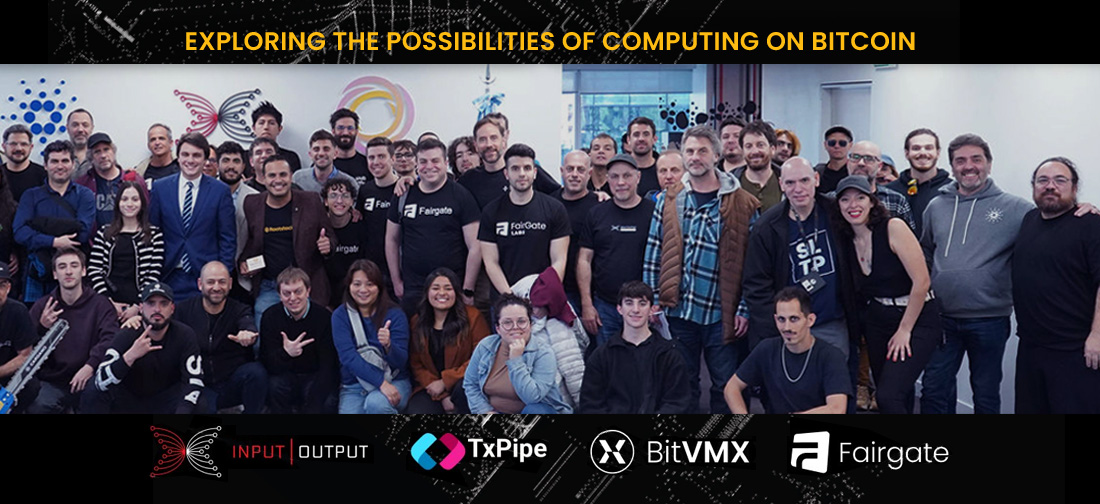BitVMX, Garbled Circuits and Fairgate’s Ecosystem of Protocols: Buenos Aires Event Recap

On September 25th, Fairgate and Input | Output co-hosted a technical workshop at IOG’s offices in Buenos Aires, focused on advancing new approaches to Bitcoin-native computation.
The afternoon brought together researchers, developers, and protocol designers to explore the growing capabilities of the BitVMX platform and a series of emerging protocols designed to scale trust-minimized infrastructure on Bitcoin.
The agenda combined foundational talks with forward-looking research and a developer-focused session led by TxPipe.




Building with BitVMX
Sergio Lerner opened the workshop with an overview of BitVMX, introducing the platform that brings practical, general-purpose computation to Bitcoin. His session focused on the architectural goals of BitVMX and the design choices that enable optimistic execution without requiring changes to Bitcoin’s consensus rules. In the follow-up talk, Martín Jonas detailed the implementation of a RISC-V virtual CPU on top of Bitcoin.
Garbled Circuits and BitVMX
In a technical deep dive, Ariel Futoransky (Futo) presented current efforts to integrate Garbled Circuits into Bitcoin-native execution using BitVMX. The talk explored how this cryptographic primitive can enable expressive, conditional logic while maintaining scalability and trust-minimization. Futo walked through the challenges of mapping Garbled Circuits execution onto Bitcoin’s stack, and introduced the building blocks that make it viable on Taproot-based scripts.




Benchmarking Bridge Designs on Bitcoin
Back on stage, Sergio Lerner explored the design landscape for trust-minimized Bitcoin bridges. The session discussed the trade-offs between security, scalability, and capital efficiency across different models.
Developer Experience in UTxO
Following next, Santiago Carmuega from TxPipe led a session highlighting the challenges and strengths of building in the UTxO model. He introduced Tx3, a framework for designing, testing, and implementing decentralized applications in UTxO-based environments, and discussed how BitVMX could serve as a natural integration point for future tooling.
The talk sparked productive discussion on improving developer workflows across Bitcoin and sidechain ecosystems.






FLEX: Capital-Efficient Fraud Proofs
In the closing session, Sergio Lerner introduced FLEX (Fraud Proofs with Lightweight Escrows for eXits), a protocol that rethinks fraud-proof systems on Bitcoin. FLEX uses garbled circuits to enable on-demand escrows, allowing participants to post security bonds only when challenged.
This design lowers financial barriers for operators, increases decentralization, and enables scalable bridges and rollups without compromising trust assumptions.
Looking Ahead
The Buenos Aires workshop marked an important step in expanding the reach of BitVMX and showcasing protocol research that pushes the limits of what’s possible on Bitcoin. With TOOP, FLEX, WISCH, ESSPI and BATTLE now part of the evolving stack, the event offered a shared space for discussion and experimentation.
Thanks to everyone who joined—we’re excited to keep building and look forward to continuing the conversation at future events.





